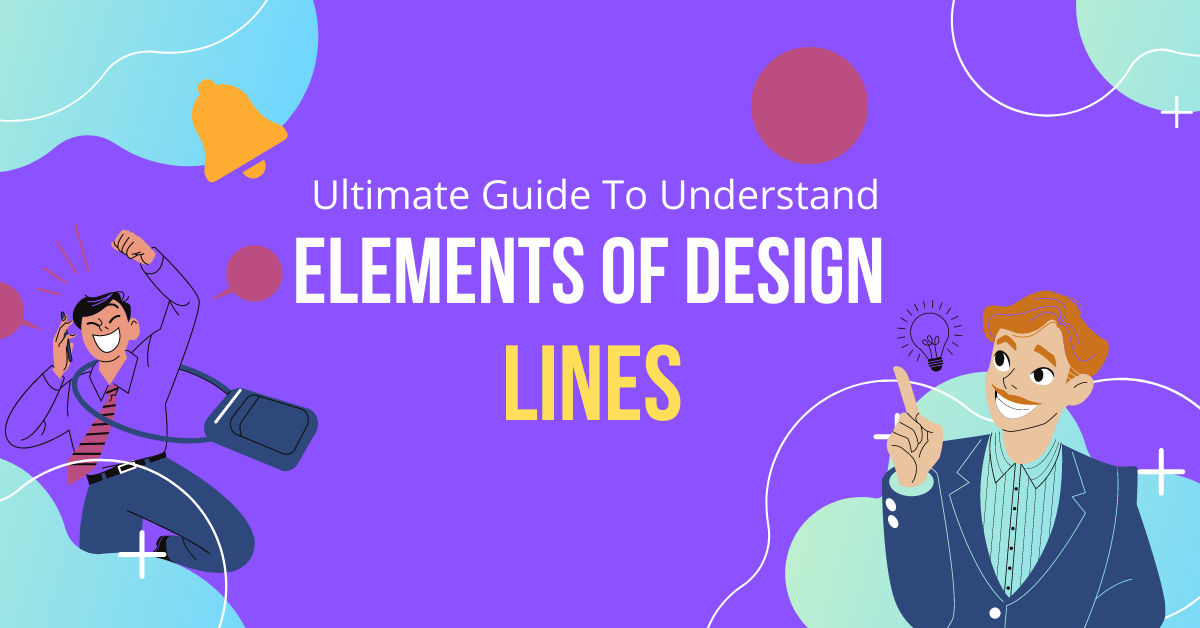One of the fundamental components of design is line. Given that it may be employed to produce a range of diverse effects, it is arguably the most significant and useful of all the components. Line may be utilised to communicate a feeling of balance, proportion, and scale as well as movement, rhythm, and pattern. It may be utilised to provide texture and interest to a design, as well as to define shape and form. Lines might be thick or thin, straight, curved, or irregular. It may be a useful tool for both positive and negative space and can be utilised alone or in conjunction with other components.
1. Horizontal Lines
One of the simplest and most adaptable design components are horizontal lines. They can be employed to instil a sense of security, serenity, and order. Additionally, they may be utilised to enhance visual interest, alter the rhythm of a design, or convey motion. A sense of stability is frequently evoked by the use of horizontal lines. This is because the horizontal plane is what our eyes naturally follow. We think of horizontal lines as being securely anchored when we observe them. This makes designs that portray a sense of serenity and tranquilly perfect for using horizontal lines. The use of horizontal lines can also offer visual flair. This is as a result of their propensity to break up a design’s negative space.You may make a composition more intricate and fascinating by using horizontal lines. Last but not least, horizontal lines can be utilised to convey motion. This is due to the fact that horizontally moving items naturally catch our sight. You may provide the impression that something is moving in a design by employing horizontal lines.
2. Vertical Lines
In design, vertical lines are applied in a variety of ways. They can be utilised to add interest to a design, convey a feeling of height or drama, or both. Vertical lines can be used to define boundaries, frame views, or guide the viewer’s attention to a focal point. Vertical lines are frequently employed in art to emphasise certain parts of the composition or to convey movement. Vertical lines are frequently used in advertising to highlight a product or service. Vertical lines are frequently utilised in architecture to give a building a feeling of scale and to add interest. Vertical lines are employed in interior design to give a sense of spaciousness and to segment a room into different areas.
3. Diagonal Lines
A common form of line used in many different kinds of design is the diagonal line. They may be utilised to give intrigue to a design as well as a sense of movement or motion. In addition to dividing a space, diagonal lines may be employed to add a sense of depth.
4. Arc
An arc is a line that bends smoothly and sweepingly in design. Arcs can be utilised in a design to convey a sense of motion, energy, or tension. They can also be employed to enhance a design’s contrast or appeal. A multitude of techniques, such as sketching, painting, or computer-aided design (CAD) software, can be used to make arcs.
5. Curves or waves
Because they may direct the eye in a certain direction, curves are frequently employed to convey a sensation of movement or flow. They can also be employed to enhance a design’s contrast or appeal. Waves can be utilised to provide interest or contrast, as well as to give a feeling of rhythm or movement.
6. Zigzags
One of the most adaptable and often used design components are zigzag lines. They may be utilised to provide a range of effects, from enhancing a design’s appeal and texture to generating a feeling of rhythm or movement. Zigzag lines may be used to link or divide various design components as well as to add a feeling of balance or contrast.
Conclusion
One of the most fundamental and significant components of design are lines. They are useful for defining space, forming forms, and adding texture. Straight, curved, or zigzag lines are all possible. They might be pale or black, thick or thin. You may use lines by themselves or in conjunction with other components. To develop designs that are intriguing and appealing, experiment with combining different aspects. Follow Artmeet for more posts about design aspects.
Read more about Elements of Design here:

